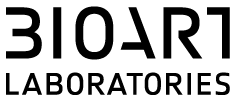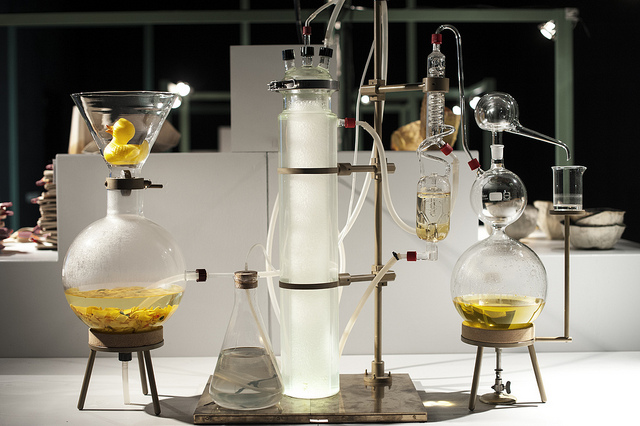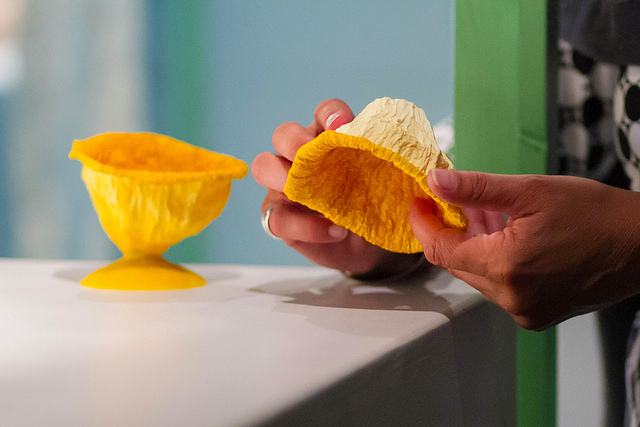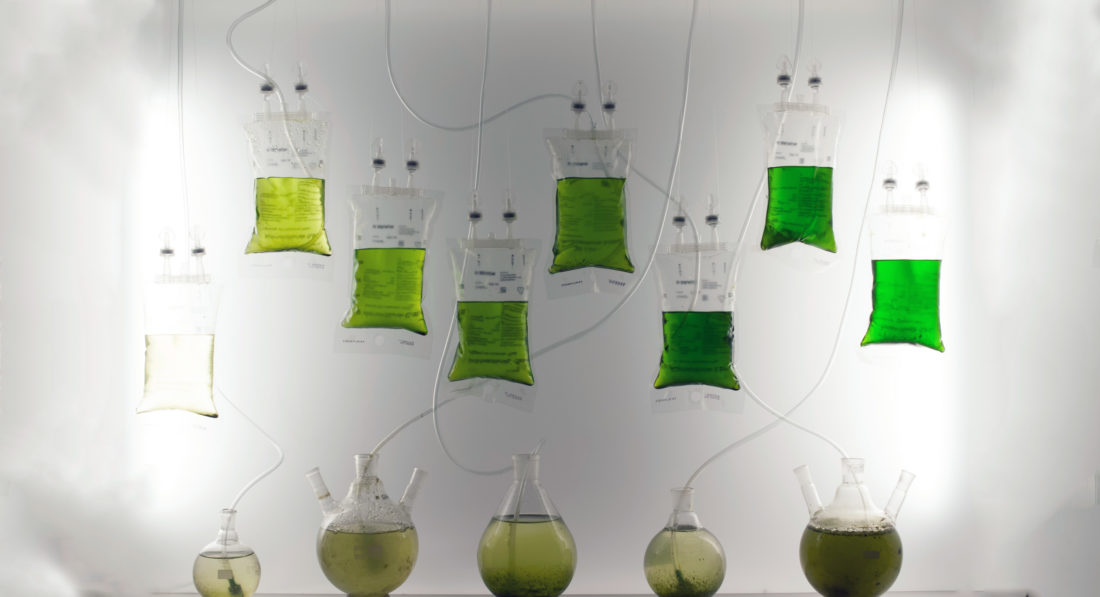Biobased Wunderkammer
Wunderkammer, also known as Kunstkabinett, Cabinets of Wonder or wonder-rooms, is a concept that was created during the Renaissance. The Cabinets of Wonder were encyclopedic collections of objects whose categorical boundaries were not yet defined.
In October 2013, several inspiring works were collected for the Biobased Wunderkammer, an exhibition created in collaboration with the Green Chemistry Campus. The Biobased Wunderkammer was a unique collaboration between art, agriculture and industry that was on display during the Dutch Design Week of 2013 in Eindhoven, the Yksi Exhibition and the STRP meets Discovery Salon.
The Biobased Wunderkammer was a testing ground for multidisciplinary teams who worked together on social themes and shared the results of their collaborations at the exhibition. Thanks to the collaboration of curators at BioArt Laboratories and Material Sense, the Bio based Delta and the Green Chemistry campus, the projects and bio based materials for the exhibit could be collected to be showcased, showing everyone that linking artists and bio based entrepreneurs can lead to inspiring discoveries and applications of new features of bio based materials.
During the exposition, the collaboration between art, science and philosophy managed to charm visitors, inspiring them with fibers made from eggplants, an exhibition by Allissa van Asseldonk and Nienkie Bongers, or fungi that change into bio-fuel, by Maurizio Montalti. Jalila Essaïdi and Simone de Waart had a top spot with their collection of biomaterials, such as natural fragrances and dyes, bio-plastic granules, and pigments which stimulate smell, feeling and hearing.
Other such admirable and futuristic projects that were shown include the crocheted membrane by Sonja Baumel, where she translated the scientific data of our unique body bacteria into crocheted, fashionable garments that react to our individual body temperature. And the photography exhibit Magnified Materials by Koen Hauser, in which he showcased beautiful photographs created entirely out of biobased materials.
Or perhaps our visitors were drawn by the beautiful beeswax exhibition Joris van Tubbergen had set up, where he showed his research about using beeswax to print 3D creations, using a 3D printer he developed himself. Or for those more interested in new materials used in the fashion industry, there was the Palmleather exhibit by Tjeerd Veenhoven, where he used palm leaves to create bags and slippers.
The projects mentioned above were just some examples of the amazing innovative creations that were showcased during the Biobased Wunderkammer. Take a look at the video down below you want to get a quick taste of the incredible projects and collaborations that were shown.
City
Eindhoven
Date
October 8, 2013
Category
Exhibitions





